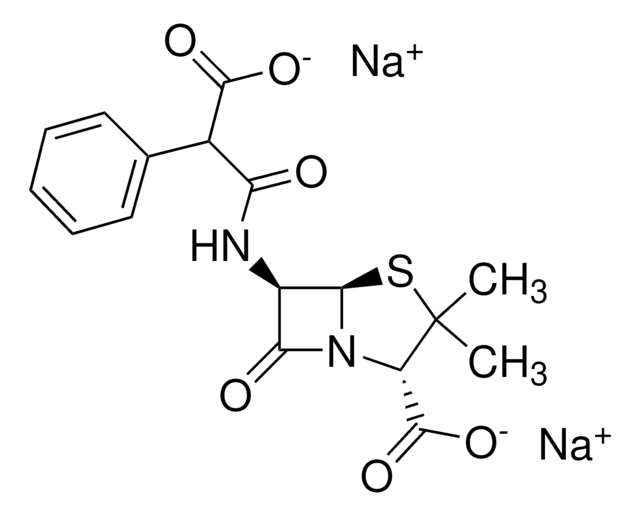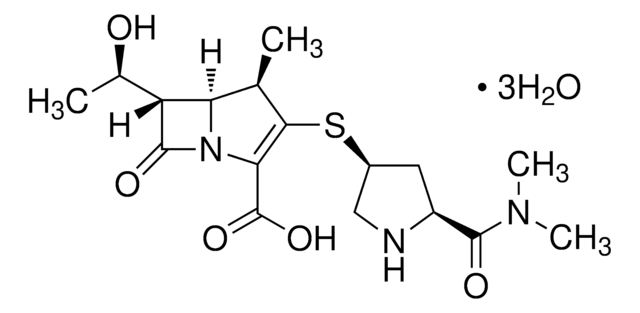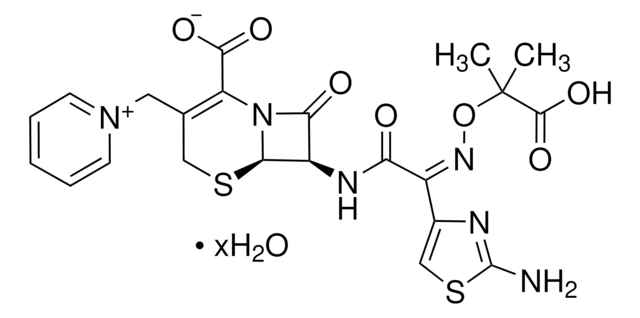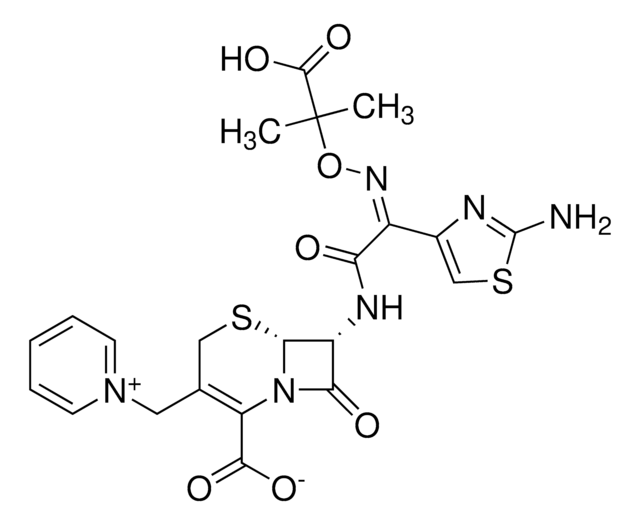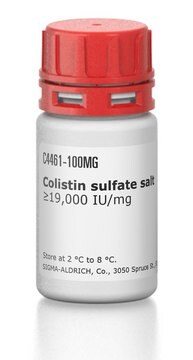C7912
Cefotaxime sodium salt
potency: 916-964 μg per mg
Synonym(s):
Cefotaxime, Cefotaxim sodium salt
About This Item
Recommended Products
form
powder
Quality Level
potency
916-964 μg per mg
solubility
H2O: 50 mg/mL
antibiotic activity spectrum
Gram-negative bacteria
Gram-positive bacteria
Mode of action
cell wall synthesis | interferes
storage temp.
2-8°C
SMILES string
[Na+].[H][C@]12SCC(COC(C)=O)=C(N1C(=O)[C@H]2NC(=O)C(=N/OC)\c3csc(N)n3)C([O-])=O
InChI
1S/C16H17N5O7S2.Na/c1-6(22)28-3-7-4-29-14-10(13(24)21(14)11(7)15(25)26)19-12(23)9(20-27-2)8-5-30-16(17)18-8;/h5,10,14H,3-4H2,1-2H3,(H2,17,18)(H,19,23)(H,25,26);/q;+1/p-1/b20-9-;/t10-,14-;/m1./s1
InChI key
AZZMGZXNTDTSME-JUZDKLSSSA-M
Looking for similar products? Visit Product Comparison Guide
General description
Application
Biochem/physiol Actions
Other Notes
Signal Word
Danger
Hazard Statements
Precautionary Statements
Hazard Classifications
Resp. Sens. 1 - Skin Sens. 1
Storage Class Code
11 - Combustible Solids
WGK
WGK 2
Flash Point(F)
Not applicable
Flash Point(C)
Not applicable
Personal Protective Equipment
Choose from one of the most recent versions:
Already Own This Product?
Find documentation for the products that you have recently purchased in the Document Library.
Customers Also Viewed
Our team of scientists has experience in all areas of research including Life Science, Material Science, Chemical Synthesis, Chromatography, Analytical and many others.
Contact Technical Service
